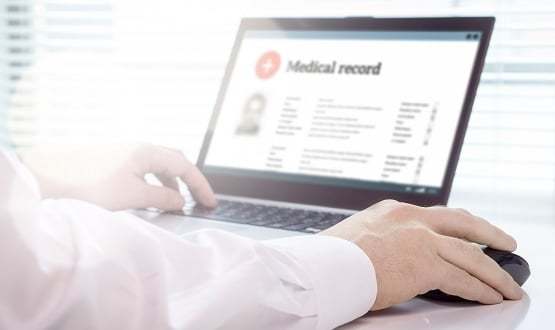Enter the CCG: more thoughts on what hospitals can learn from primary care IT
- 29 November 2016

It’s not for me, as a GP, to tell secondary care how to manage the transfer to electronic records.
However, the publication of the Wachter Review earlier this year prompted me to think about what hospitals could learn from primary care’s experience of digisation.
In my last column, I considered some of the risk and benefits of rapid and slow cross-overs from paper to electronic working. So this month I’ll continue where I left off, relating my own experience.
Design
The first rule of successful medical IT design is to involve practising clinicians at the outset. It is significant that many of the most successful primary care applications were originally designed by doctors.
Involving clinicians right from the start means that, from an early stage, the software designers can be told in no uncertain terms: “No, that’s not the way clinicians do it” – or, alternatively: “Hey, do you realise if we could do XYZ here; the users would derive vastly more benefits…?”
Good-quality software scores highly in users’ eyes, not just because it presents information in the right way and records it accurately; it also needs to be easy to use during the consultation. Clinical user-friendliness is crucial.
Contracts and user groups
I’ll never forget when Dr Joe McDonald, chair of the CCIO Network, came to the Annual Conference of our (TPP’s) national Primary Care User Group. He was blown away – both the size of the meeting, and the obvious enthusiasm and interest of its members.
This was a complete contrast with other sectors, he observed. We concluded that user groups are more likely to be active, dynamic and relevant if they have influence – which is certainly what happens in primary care.
Not only are there national financial penalties for suppliers if they don’t involve their user group in their planning, but individual users, if frustrated, can at any time decide to change to an alternative system.
This situation doesn’t always apply in the non-primary care sectors of the NHS. Here, there are often no contractual penalties if the software firms don’t regularly consult their users. Consequently, there is much less incentive for users to become involved if they sense their suggestions and concerns are less likely to be noted.
Engagement and ownership is key: users need to feel they own the product just as much as the supplier does. It’s always helpful for software houses to have financial incentives to involve their user groups – or even contractual penalties if they don’t.
Time needed to move across
When our practice first went completely paperless, we provided the historical paper notes for every session. Within a surprisingly short time, we found we could largely dispense with paper records: it was easier simply to ring through to the office if we required them.
Within three months, the need for paper notes had dropped hugely although, obviously, the exact speed also depended on how frequently each patient came to the surgery and how complex/chronic their medical situation was.
Consequently the job of routinely ‘pulling’ the paper notes from the carousels and later refiling them – previously a huge chore – almost disappeared. Instead, it was replaced by a different staff task – always having someone available to put down their current work, pull a specific set of paper notes and whisk them down the corridor.
Movement of paperwork
How does this translate into secondary care? The parallels with primary care are less obvious, simply because of geography.
In most hospitals, the record store is considerably further away from where the clinicians are working, and so the request “please fetch Mr Jones’ file” becomes vastly more time-consuming.
Discontinuing the routine provision of paper notes for clinics is likely to take much longer than in primary care: on average, the GP sees each patient six times a year, whereas many hospital out-patients are reviewed much less frequently – perhaps just once a year or less.
This is where conditions within general practice and the acute sector are completely different and parallels cannot easily be drawn.
In primary care, most practices didn’t scan in the entire historical paper records: it was expensive and often unnecessary, because it was easy to acquire the paper notes if needed. In hospitals, where the record department may be hundreds of yards away (if not several miles!) a different attitude will be needed.
Some hospitals will doubtless consider scanning the entire medical record prior to full go-live. An alternative might be to scan everything covering the last two or three years and store the rest off-site.
Files could be brought back (scanned and sent electronically of course) under service level agreement of a four‑hour turnaround for emergencies/urgent need, or two to three days for an outpatient clinic.
Staff confidence
Inducing confidence in the use of a computer system is an art form in itself. Clinical staff need to be supported and encouraged.
When introducing IT — or alternatively, more intensive use of IT — warm, non-judgmental hand-holding is often needed. For non-techy members of staff, the challenge of IT can be a great deal more intensive, complex and threatening than we IT-types often realise.
Incentives
Finally, don’t forget incentives. Staff will more readily accept the upheaval and stress of computerisation if they can immediately experience its benefits.
These incentives don’t have to be financial: a reduction in personal stress, or the ability to deliver immediate recognisable benefits for patients will often do the job nicely.
My fondest memory here goes back to the 1980s, when we introduced our first computer to the practice (a BBC‑B! — the IT’s got a lot bigger since…) If a patient’s record didn’t contain their telephone number a question popped up asking the user to enter it. No big deal, you might think.
Previously, ringing up a patient could be a faff — and staff had to do it a lot: get up, walk to the carousels, find the right file (assuming it wasn’t out with somebody else in the practice), copy the telephone number, replace the file and return to desk.
By comparison, looking it up on the computer was a doddle. The result? – you’ve never seen so many receptionists falling over themselves to log patients’ telephone numbers on the computer whenever that question came up on-screen. They knew they were onto a good thing!
But the knock-on effect was even more interesting — and significantly bigger. Once our front-line staff realised what the computer could do for them, they started suggesting ways it could help us in our daily work.
That was the sublime moment when everyone stopped thinking of it as ‘the computer’ and instead perceived it as ‘our computer’.
From then on, IT in our practice was driven from the bottom up, as well as from the top down – a most powerful combination. We haven’t looked back since.
About the author: Dr John Lockley is clinical lead for informatics at Bedfordshire Clinical Commissioning Group and a part-time GP. Follow him: @DrWJL





